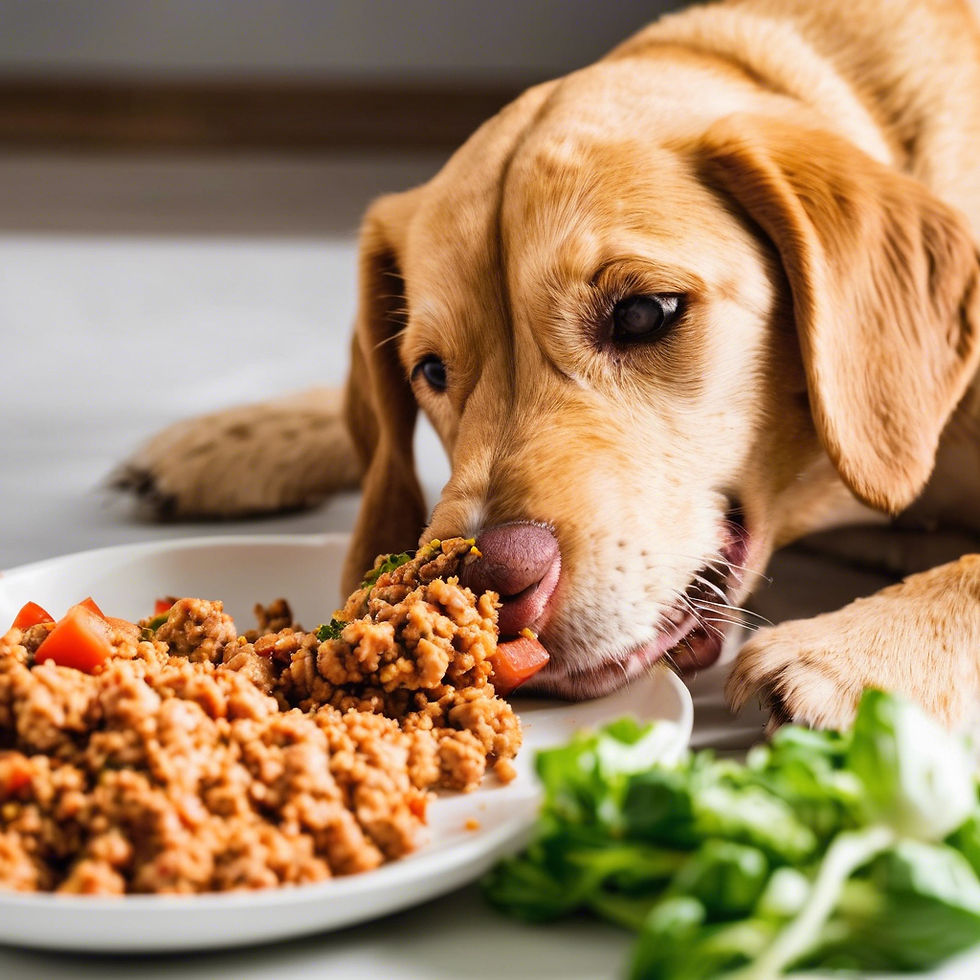The Hidden Toxins in Dog Kibble: What Every Pet Owner Should Know
- pfab80
- Jun 17
- 2 min read

When it comes to nourishing our canine companions, many pet owners assume that commercially available dog kibble is a safe and convenient option. However, beneath its crunchy exterior lies a concerning reality—many types of kibble contain hidden toxins that can have detrimental effects on your dog’s health. Understanding these harmful substances is the first step in making informed choices about your dog’s diet.
Common Toxins Found in Dog Kibble
Mycotoxins: Mycotoxins are toxic compounds produced by certain molds that can grow on grains commonly used in kibble, such as corn, wheat, and rice. Even in small amounts, mycotoxins can cause liver damage, weaken the immune system, and increase the risk of cancer in dogs.
Acrylamide: This chemical forms when kibble is cooked at high temperatures through a process called extrusion. Acrylamide is known to be a neurotoxin and a potential carcinogen, posing serious health risks over time.
Artificial Preservatives (BHA, BHT, and Ethoxyquin): These preservatives are used to extend shelf life but have been linked to various health issues, including cancer, liver and kidney damage, and skin problems. Ethoxyquin, in particular, was initially developed as a pesticide and is banned in human food but still found in some pet foods.
Heavy Metals: Some kibble products contain traces of heavy metals like arsenic, lead, and mercury due to contaminated ingredients or manufacturing processes. Long-term exposure can result in neurological issues, organ damage, and developmental problems.
Glyphosate (Herbicide Residue): Glyphosate, a common herbicide, is often found in grains and soy products used in kibble. It’s suspected of disrupting gut health and contributing to chronic diseases, including cancer.
Food Dyes and Artificial Colors: Used to make kibble visually appealing, synthetic dyes like Red 40, Blue 2, and Yellow 5 offer no nutritional value and have been associated with behavioral issues and allergic reactions.
How These Toxins Impact Your Dog’s Health
Chronic exposure to these toxins can lead to a range of health problems, including:
Digestive Issues: Vomiting, diarrhea, and loss of appetite.
Organ Damage: Especially the liver and kidneys, which filter toxins.
Weakened Immune System: Making dogs more susceptible to infections.
Behavioral Changes: Hyperactivity, anxiety, or lethargy.
Increased Cancer Risk: Some toxins are classified as carcinogens.
Healthier Alternatives to Toxic Kibble
To protect your dog’s health, consider transitioning to Pawfect Pantry:
Fresh, Non-Processed Foods: Lean meats, vegetables, and fruits.
High-Quality Foods: Brand that use whole, natural ingredients without artificial additives.
Proportioned Diets: Suitable for your dog’s needs to achieve ideal weight.
Making the Transition Safely
Switching from kibble to a Pawfect Pantry diet should be done gradually to avoid upsetting your dog’s digestive system. Introduce new foods slowly, and consult with your veterinarian to ensure your dog’s nutritional needs are met.
Final Thoughts
Your dog’s health and longevity are directly influenced by their diet. By understanding the hidden toxins in dog kibble and opting for wholesome, natural foods, like the ones we offer at Pawfect Pantry you’re taking a significant step towards ensuring your dog lives a happier, healthier life.
Have you made the switch from kibble to natural foods? Share your experiences and tips in the comments below!





Comments